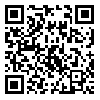Sun, Jan 19, 2025
[Archive]
Volume 17, Issue 3 (September 2020)
IJMSE 2020, 17(3): 80-84 |
Back to browse issues page
Download citation:
BibTeX | RIS | EndNote | Medlars | ProCite | Reference Manager | RefWorks
Send citation to:



BibTeX | RIS | EndNote | Medlars | ProCite | Reference Manager | RefWorks
Send citation to:
Thakur A, Reddy G. Spectrophotometric Detection of Mercury Using Lignosulphonic Stabilized Silver Nanoparticles (AgNP). IJMSE 2020; 17 (3) :80-84
URL: http://ijmse.iust.ac.ir/article-1-1724-en.html
URL: http://ijmse.iust.ac.ir/article-1-1724-en.html
Abstract: (12758 Views)
Mercury, one of the common pollutants in water, is known to affect human health adversely upon exposure. It is released in water not only by various natural processes but also by human activities. Methods developed so far for the detection of mercuric ions in water have limitations like sensitivity range, complex setup, skillful operation etc. Silver nanoparticles, due to unique properties, have been explored by researchers to develop better detection systems. Stable silver nanoparticles can be easily synthesized by methods of green chemistry, its reaction with mercuric ion can be easily observed by changes in color and UV-Vis spectra. The absorbance data from UV-Vis spectra can also be used in quantifying mercury concentration. In this paper, stable silver nanoparticles synthesized using silver nitrate as precursor, sodium lignosulphonate (LS) as reducing and stabilizing agent under microwave radiation are explored for detection of mercuric ions in water. Formation of AgNP was confirmed by UV-Vis band at 403.5nm. The intensity of this band showed a proportional decrease with increasing Hg+2 concentration. Hg+2 ions were detected by a distinct color change at higher concentration of Hg+2 also. The limit of detection (LOD) calculated from the observed absorbance data to be 0.7 ppm.
Type of Study: Research Paper |
Send email to the article author
| Rights and permissions | |
 |
This work is licensed under a Creative Commons Attribution-NonCommercial 4.0 International License. |






